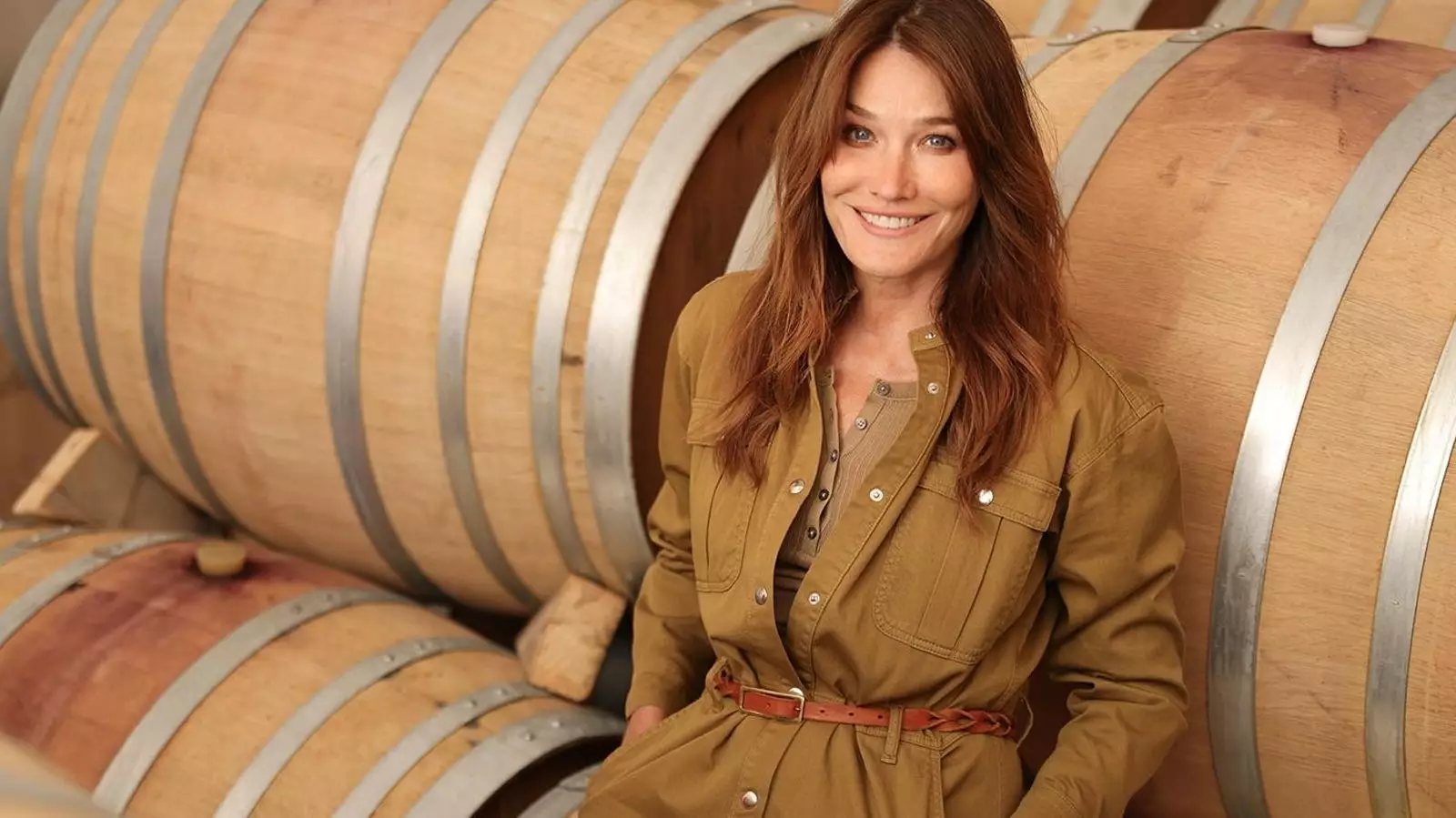In an era where authenticity and distinctiveness are the coins of the realm, Château d’Estoublon exemplifies how a storied estate can reinvent itself without sacrificing its essence. When Carla Bruni and her high-profile partners stepped into this 300-hectare Provençal domain amid the turmoil of 2020, they were not content with simply revitalizing an old estate; they aimed to carve a new identity rooted in the raw, unspoiled beauty of the Alpilles. Rather than following the herd of mass-market rosés, they envisioned something with depth, precision, and a story worth telling.
This isn’t merely a rebranding exercise; it’s a strategic overhaul that underscores the importance of crafting a product with perceived and real longevity. Rather than succumb to fleeting trends, the team aimed to create a flagship rosé—Roseblood—that would stand out amidst an oversaturated market. Its purpose is clear: elevate Provence’s reputation from a seasonal, picturesque stop to a serious, structured wine offering that commands respect on the global stage. What makes this approach admirable is its deliberate focus on vinicultural integrity and storytelling—elements often lost in the pursuit of quick commercial gains.
Breaking the Pink Mold: The Art of Disruptive Elegance
Most rosés are designed for a moment—poolside, social media, casual sipping—beautiful but fleeting. Roseblood disrupts this narrative by prioritizing vineyard finesse over aesthetic gimmickry. It’s crafted to age gracefully, with a balanced profile that balances fruit, minerality, and delicate saline notes. Opening with wild strawberries and peaches, then transitioning into citrus and chalky minerality, the wine speaks of intentional restraint and meticulous craftsmanship.
Victor Joyeux, the wine’s architect, champions the idea of “balanced complexity,” a concept that should be at the core of any great wine. Instead of shouting with overpowering aromatics, Roseblood whispers with subtle sophistication. The grapes—Grenache, Syrah, Cinsault, and Rolle—are grown at significant altitudes in the often-overlooked Coteaux Varois. This choice is strategic; the altitude and climate allow for slow ripening, which translates into finer tannins, aromatic intricacy, and a more profound sense of place. This deliberate, detail-oriented approach is a stark contrast to the mass-produced pink wines that rely heavily on branding visuals rather than vinicultural excellence.
By intentionally steering away from the superficial, Roseblood exemplifies a commitment to craftsmanship, anchored in terroir and scientific precision. It’s designed to be more than a summer drink—an investment, an aging potential, and a reflection of authentic Provençal beauty.
Building a Lifestyle, Not Just a Brand
Yet, Roseblood is only part of a broader vision—a holistic lifestyle reimagining of Château d’Estoublon. It’s obvious that the estate’s owners aren’t merely interested in profit; they’re cultivating an immersive experience rooted in the art of living well. Their investments have gone beyond vineyards to include hospitality upgrades, a boutique, a restaurant, and even a non-alcoholic sparkling option, L’Excessive. This last offering is emblematic of contemporary shifts: a move towards inclusivity, wellness, and mindful indulgence. Positioned as a sophisticated offering in the growing non-alcoholic segment expected to hit over $1 billion by 2027, it aligns with a global trend toward healthier, more conscious consumption.
This diversification strategy reflects confidence and a keen understanding of market dynamics. It’s about creating a brand ecosystem that spans wine, lifestyle, and experience. The estate’s aesthetic—clean, sophisticated, elegant—mirrors Carla Bruni’s own style, blending authenticity with a sense of effortless sophistication. The commitment to environmental sustainability, exemplified by the estate’s HVE Level 3 certification, underscores a modern ethos that resonates with a global clientele increasingly concerned with ecological impact.
Furthermore, the estate’s commercial ambitions are palpable. With distribution spread across over twenty countries and early sell-outs at prestigious venues, it’s clear that the brand’s premium positioning is resonating. High-profile collaborations, like potential fashion capsules, embed Roseblood deeper into the luxury conversation, elevating it beyond just wine into a symbol of refined taste and emotional storytelling.
The Power of Strategic Leadership
Much of Château d’Estoublon’s rise can be attributed to visionary leadership—most notably Jean-Guillaume Prats, whose experience leading Châteaux Lafite Rothschild and LVMH’s wine division has cemented his understanding of global luxury markets. His ability to translate that knowledge into a boutique, agile operation at Estoublon exemplifies how traditional wine estates can harness corporate strategies without losing their soul.
Prats’s approach signals a departure from the purely aesthetic or traditional models, leaning instead into innovation, strategic distribution, and high-quality branding. Roseblood is not a case of luck but a carefully curated product of expertise, modern marketing, and a relentless pursuit of excellence. The fact that it already outperforms initial projections illustrates how well-considered these strategies are.
Compared to brands like Whispering Angel, which built dominance through ubiquity and casual appeal, Roseblood distinctly embraces a different set of values—artisanal refinement, storytelling, and long-term prestige. It caters to a clientele that values authenticity and depth over trend-driven flashiness, thus carving a unique niche in an otherwise crowded category.
Future-Proofing Through Sustainability and Innovation
The estate’s commitment to eco-conscious practices isn’t just marketing hype; it’s embedded into its DNA. By prioritizing sustainable and environmentally responsible viticulture, Château d’Estoublon ensures that future vintages will benefit from healthier soils and ecosystems. This strategic focus on high environmental value (HVE) certification also aligns with affluent consumers’ increasing expectations for ethical production.
Their ongoing expansion into global markets, coupled with plans for high-profile collaborations, indicates a desire not merely to compete but to redefine what luxury Provençal rosé can be. They are positioning themselves at the intersection of tradition and modernity, where craftsmanship meets innovation, and where a genuine sense of place elevates every sip. Roseblood’s rise exemplifies that authenticity, when paired with strategic clarity and modern values, can create an enduring luxury icon—one that balances art, science, and soul.


Leave a Reply